-
You have two professional titles, dramaturge and translator. Dramaturge is a profession that has long existed in German theater, but it is not one that has established itself to any significant degree in Japan. Recently, however, with the growing interest in German theater, spurred in part by the 2005 “Germany in Japan Year,” new attention has come to bear on the dramaturge. In reality, the role of the dramaturge is highly varied even in Germany and it is hard to fit into one definition. As we talk to you today about your work, I hope to hear how you define the role of the dramaturge.
Could we begin by asking how many people there are in Japan today who formally call themselves dramaturges? - If you exclude part-timers and limit it to people who work professionally as dramaturges, I would say that besides myself there may be one or two. However, there is a larger number of people who work as dramaturge for specific works where required, and the number does seem to be growing gradually.
- I believe that originally you studied in the doctoral course in French literature at Rikkyo University and that your specialty was Beckett, wasn’t it?
-
Yes. My area of concentration was the prose works, the novels and novellas of Beckett. As a student I had very little interest in theater, in fact I tended to dislike it.
When the Setagaya Public Theatre opened in 1997, I happened to get a part-time job as the subtitle operator for the production of Happy Days directed by Peter Brook. That was my first job in theater. - You have done many translations such as [Beckett’s] Worstward Ho in 1999. In 2001 you did the subtitle translations and also served as subtitle operator for the production of The Tragedy of Hamlet , Prince of Denmark directed by Brook. Was it from translating these foreign plays that you gradually got into the work of dramaturge? I don’t imagine there are many people who have started out in translation and then gone on to be a dramaturge.
-
Working part-time as a theater subtitle operator was certainly a big part of the process. It was quite by chance that I took the job doing the subtitles for
Happy Days
, and when I actually had the subtitles up there as the play was being performed, I was extremely shocked at the result. I had edited the subtitles from an existing translation of the play and I was surprised to see how poorly the translation matched the nuances of the performance as it was actually being given on stage.
That brought me a very clear realization that a translation in itself involves interpretations of how the translator thinks the play will, or should be directed or acted out. I realized that when we read a translation we are actually reading that kind of text. Of course, I am not saying that exiting translations are bad. What I am saying is that they are in fact the translator’s “interpretation” in that sense. In other words, the translation already contains a directorial direction. So, when Japanese companies and the directors and actors use those translations to stage a play, they are in fact re-directing and already directed play. It is “double directing” in that sense, which tends to be stifling in nature from the outset. I thought it should be possible to stage a play-in-translation with more creative freedom than that. I suddenly realized that there was a real need to seriously rethink what can be done in drama translation. - After that, how did you become involved in working on theater productions?
-
I was able to publish a book of translation of Beckett prose works, and after that I received offers to translate plays. Presently I have begun working on Beckett little by little with the Yasuki Fujita, who is the leader of the group called Arica, Rieko Suzuki, a former member of the Tenkei Theater company, and director Hatsumi Abe.
What I felt when I received the offer to do new translations was that if I did it alone based only on my own ideas, it would result in the kind of problematic translation I mentioned just now. In translating the word “me” for example, if I choose to use the Japanese formal watashi or the informal ore , that is already an interpretation and a directorial judgment. I didn’t like the idea of having my own translation decisions of that type influencing the direction of things like the directorial decisions and the casting. Because I am not a director. To decide what to do in cases like that, I began talking with the directors a lot. If I don’t talk to them I can’t do a translation. That is how I came to take my present approach to drama translation. - So, to do your new translations, do you spend a lot of time in the rehearsal studio?
-
If I am translating a play for a specific production that is already planned, I have to have a translation done before the production enters the studio for the preparatory rehearsal stage, so I talk a extensively with the director as I am doing the initial translation, and after it is completed and the studio work begins, I am there at the studio watching the director work with the actors all the time and continuing to work on the script. In the process I have come to do a great deal of consulting with the directors and the production staff and to watch the rehearsals and what the actors are trying to do. During this process I am able to think about the possibilities for a variety of different interpretations. There are some things that will exist as possibilities in the original text but will be lost in a translation. When I see an actor deliver a line in a way I hadn’t expected, I will suggest alternative translations that might fit the delivery or the actor’s intent better. This rewriting process that takes place based on what I see in the studio becomes quite a detailed and intense re-working of the script.
What I have learned from working in this way is that most translators don’t work like this way and that what I was doing apparently goes beyond the normal realm of translation. Around the time I was realizing this, I believe it was in 2004, I had the opportunity to meet Eiichiro Hirata (Associate Professor, Keio University Faculty of Literature) just as he had returned from Germany. Hirata specializes in German theater and he told me that the work I had been doing is that of what they call a dramaturge in Germany and that it is an established profession. That is what led me to begin calling myself a dramaturge. - The first work you were involved in after you began working formally as a dramaturge was the production of Beckett Live that premiered in February of 2005. It was a production planned by Eriko Suzuki and her Three Point company and directed by Hatsumi Abe. What did your work actually involve in that production?
- It was a work that involved adaptations of segments of Beckett novels and prose, and although I had changed my professional title to dramaturge, my job was no different from what I had been doing until then. I was translating and editing texts and going to the rehearsal studio and thinking with the director about ways to bring it into the contemporary context in meaningful ways. In reality, after that the script got farther and farther from what you could call translation.
- Although you did translation for Beckett Live the term translator didn’t appear anywhere in the credits, did it?
- That’s right. Personally, I am not really interested in credits, so there was no mention of me as “translator.”
- Doing the translation for each production and then spending all that time in the studio working it into a script must involve a big time investment. What inspires you to spend all that time and effort?
- I guess it is because I don’t find the interpretations [of the original texts] that I can come up with by myself very interesting (laughs). You might say that it is not enough for me. Of course, when I am translating I always think hard and put my best effort into it, but at the same time I am even more interested in the discoveries I make when I find a translation that has gone beyond what I had come up with. I want to make new discoveries in the studio, and because of that my approach is to think constantly about what a translator can do. So, it is important to me to spend a lot of time in the studio when the director and actors are working on a play.
- When the involvement reaches that level, I think many people would want to begin directing themselves. What made you decide to take the role of the dramaturge, which I believe one could call a position in between the text and its staging (directing), rather than become a director yourself?
-
One factor is that my interest wasn’t in theater to begin with, and knowing how many people are already doing interesting thing in theater, my feeling is that I would like to find ways to contribute to their work.
Also, I am not the type who is interested in just thinking and deciding things by myself and then getting people to act out my ideas on stage. In the field of translation as well, I admit there is a need for translations that faithfully keep to the word of the original text, but that isn’t very interesting to me. In translation and in stage directing, I am more interested in finding and expanding on meanings or methods that were not necessarily intended by the original author but would have potent relevance in today’s world. - In 2006 you worked as dramaturge on the production of Sarah Kane’s 4.48 Psychosis directed, again, by Hatsumi Abe and premiered on the program of the Tokyo International Festival (TIF, predecessor of Festival / Tokyo). What was your actual role in that production?
-
That production represented a big turning point in my work with Abe-san. The director [Abe] and I thought together about the issue of what could be done to Sarah Kane’s text to make it relevant to Tokyo today, or Japan today.
First of all, I, and also the actors and the rest of the team, did a lot of research about the state of suicide and problems like people (especially the elderly) dying alone, and then shared our findings. In fact we went to a lot of places for that research and sought out connection that we could bring to the original text. My main job was to take the initiative, along with the director, in creating an environment that expedited and encouraged that process.
This process of questioning how a work can bring a relevant message to the contemporary audience is something that is an important part of translation as well. With any work there must be images and plans that were in the mind of the author when it was written, and of course that has to be respected, but neither Abe-san nor myself were interested in simply reproducing that as our working direction. Instead, we made every effort to find connections within the realities of contemporary society that could bring the text to life with relevance. When deciding on the words to use in the translation, as well, rather than simply deciding on the basis of my own ideas, we spent a lot of time thinking about what kind of translation could create connections to the contemporary society, the contemporary world we live in. - 4.48 Psychosis was Sarah Kane’s last work before she succumbed to psychotic depression and committed suicide at the age of 28, and for that reason it is believed to reflect her own lonely isolation and torment. Can you give us any specific episodes relating to finding the modern-day connections for translation that you just mentioned?
-
At the end of Kane’s play there is the line, “Please open the curtains.” In this case, one meaning of the word curtain is the stage curtain (
maku
in Japanese, as opposed to
kaaten
for regular window curtains), so it might be translated “open the [stage] curtains” in Japanese, and there could be other possible translations as well. Just at the time I was thinking about how to translate it, in my research I happened to learn about a housing project called Tokiwadaira in the city of Matsudo where the local government had been one of the first in Japan to initiate a program to try to prevent the elderly residents from dying in isolation or committing suicide. I watch a documentary by NHK (the national broadcast network) about that program, and I went to Matsudo myself.
In its early years back in the era of Japan’s high economic growth, this housing project (completed 1955) was a place where young married couples lived until they could buy a home of their own, and in that sense it represented a starting point in people’s lives. Today, however, there are a growing number of vacancies and the majority of the occupants are lone elderly people with no relatives to live with, and in that sense it has become the final stop in people’s lives. That has made it a place where a large number of elderly die a solitary death. To prevent these solitary deaths, the community association in the project has initiated programs where volunteers makes rounds of the apartments of the elderly and operate a sort of consultation center. Ne scene in the NHK documentary featured an elderly man who had made a request for help in cleaning his apartment. When they visited his apartment they found it littered everywhere with garbage like empty pack lunches from the convenience store and empty beer cans and the futon bedding left out on the floor all day. When the neighborhood volunteer, a late middle-aged woman, entered the room to do the cleaning, the first thing she did was to go to the window and throw open the curtains. She scolded the old man, saying, “Shame on you. You should open the curtains in the daytime.” This scene may be different from the circumstances under which Sarah Kane wrote the line about opening the curtains, but in my translation I wanted to connect it to this kind of real contemporary situation, so I chose to use the word kaaten (window curtains) rather than maku (stage curtains). In the actual staging of this scene in our production we had the director come stage after the performers had closed the curtains and lain down and then had him say as if addressing the audience, “Would you please open the curtains?” - Listening to what you say, it seems clear to me that your involvement in these works with Abe goes beyond the role of simply consultation on the ideas that Abe puts forth as director. Is it more a case that your in-depth discussions are what consolidate much of the overall image of what the staging will be like.
- Lately I have come to think that definition of dramaturgy has changed considerably from what it used to be, and that it has come to take on a much broader meaning. Roughly defined, I would say that dramaturgy is now a matter of determining what meaning will be brought to a play when specific contents are presented in a specific order and with a specific balance. In the era when the playwright was the prominent artist in theater, the role of dramaturgy in a work was primarily involved in the production of the text. That is why dramaturgy has been translated in Japanese as the “art of composing a play” ( sakugekijutsu ). However, as the methods for creating and staging a play have become more diverse, it is now the job of the director to think about how a play should be staged [including modifications of the text], and that is a multifaceted job that is difficult for the director to handle alone. I believe that the role of the dramaturge now is to think with the director or to take responsibility for think within the entire team about the various aspects of the staging and script. For me, the first step toward performing that fuller role was 4.48 Psychosis .
- The work Atomic Survivor that Abe directed for the 2007 Tokyo International Arts Festival program is neither a play-in-translation nor is it what you would consider a newly written play by a single playwright. It brings together fragments of Brecht and Chekhov texts in a work that deals with the very real contemporary issue of nuclear power plants in a documentary fashion. In that sense, it is quite a revolutionary work. You were involved in the writing of the script for this work.
-
The idea for this work actually came out of talks I had with Abe-san while working on
4.48 Psychosis
. I have a rather unique personal image of the work of Chekhov. I felt a similarity between Chekhov and [Andrei Arsenyevich] Tarkovsky. I mentioned to Abe-san one time that I felt the quality of time that flows through Tarkovsky’s last work,
Sacrifice
, was similar to Chekhov. Abe-san replied that since she loves Tarkovsky, she would like to try doing Chekhov if it where in a Tarkovsky-esque style rather than the conventional Chekhov image. That is where the idea for
Atomic Survivor
started.
Sacrifice involves the setting of a seaside house where the protagonist’s birthday party is being held, and then a nuclear war breaks out in some distant part of the world. That gap in realities alone was the original starting point of the idea. Afterwards, however, as Abe-san and I discussed it we decided that in the post-cold war world the subject of a nuclear war lacks contemporary reality. When we started to think about what should replace that theme, she began to think about the issue of nuclear power plants. With that, we got farther away from both Tarkovsky and Chekhov and began researching the issue of nuclear energy. - How did it then evolve into the documentary type work that Atomic Survivor eventually became?
-
Abe-san had become quite interested in German theater several years before that. She had become interested in the possibilities of what you might call “post-drama theater” that was different from conventional modern-era theater in that it wasn’t story-based. She asked if we couldn’t do a work that was made up of a number of fragments linked together rather than one story line. I also began to think with her about the possibilities of doing a theater work that would have a Brecht influence and also had documentary type elements reflecting contemporary realities. We decided to research the subject of nuclear energy and then create a work as a collage of fragments we found in our research. My responsibility became verifying the things uncovered in the research being done by the entire project team and then editing and composing them into a text, while discussing things with Abe-san at each stage.
In the end, after having once gotten away from both Tarkovsky and Chekhov, we arrived at a composition that worked in fragments of Chekhov’s text for Uncle Vanya , which in fact involves a dichotomy of the rural region and the city and could thus be connected to the issue of nuclear energy. - Taking the issue of nuclear power plants as a subject for a play in the Japanese context naturally brings in the ideology of the anti-nuclear power movement. However, in Atomic Survivor that issue is handled very skillfully by setting forth the realities of the issue in a very matter-of-fact way that made it possible for you to create a work that had an entertainment aspect but was also very serious at the same time. How did you arrive at this result?
-
From beginning to end, Abe-san kept saying that we mustn’t forget that we can never pretend to become the people who actually live with this problem. What she meant was that we can’t let ourselves be so presumptuous or arrogant as to believe that we could speak for the people living in communities that have a nuclear power plant. If anything, we are the people of the cities who have forced the nuclear plants on their communities and in return just use the electricity it produces. Being such, the only thing we can do to begin with is to learn the facts about nuclear power and its problems. We applied this stance to our working process in the creation of the work, and in the end we wanted to create a work that didn’t try send out a message but, rather, one that tried to put forth the facts in a way that would get people to think about them.
Both Atomic Survivor and our production of 4.48 Psychosis are part of a series that we have titled “Series: Complex Seeing.” Complex Seeing is a term taken from Brecht’s notes for The Threepenny Opera , and it basically describes a way of seeing that includes multiple viewpoints. Brecht said that it was necessary to see things not only from within the flow of the story but also from a bird’s eye view, looking down on the world. That concept of the need for a number of different standpoints and points of view is very important to Abe-san’s work as well, and we looked for that kind of composition and staging in Atomic Survivor as well. - You have another series of works that you have done with director Shigeki Nakano of the Frankens company. Nakano is a director who does plays in translation in a style that he calls goiyaku (adding the go (mistaken) of goyaku (mistranslation) to iyaku (liberal or loose translation)), which involves using his own deliberately loose translations foreign-language plays in order to present them in new lights. How did you first meet Nakano?
- Around the time that I began working under the title of dramaturge, besides my work with Abe-san, I had begun doing a bit of festival work at the invitation of Sachio Ichimura, who was director of TIF at the time. Among those projects was a series of drama readings of contemporary American plays, in which I was participating as the organizers’ dramaturge. It was when we had Nakano-san direct one of the readings of that series that I first met him.
- In that project it was not a Nakano goiyaku (liberal mistranslation) but a regular performance, wasn’t it?
-
We used a translation by someone other than Nakano-san and presented it on stage after about a week of work and rehearsals in the studio. That is where I worked with him.
At that time, I began to watch his goiyaku productions and they made me think a lot about my own work as a translator and what translation can be in the theater context. Nakano-san calls his works goiyaku (liberal mistranslation), but of course that is just a deliberate bit of humility, when in fact what he is doing is approaching very seriously the question of how we can do foreign plays in translation in Japan, with our bodies and with our sensibilities. His approach made me realize with regret that it was actually his painfully sarcastic way of saying that these plays can’t be performed viably in Japan with a straight translation. That realization got me even more interested in Nakano-san’s work.
After two years working together for TIF, that next step came when I helped out with the production Zuzushii that Nakano-san staged at Nogeyama Zoo. After that, in a time Nakano-san was beginning to do work that was a bit different from what he had been doing until then, the first time we worked together was on 44 Macbeth . It was the first Shakespeare production for the Shigeki Nakano + Franken company and I participated in the role of thinking together about how to do it. - What did your participation involve?
- Before Nakano-san began writing the actual script we talked a lot about how it should be done. And we did a considerable amount of analysis of some of the better presentations of Macbeth that had been done until now, particularly the way the plot had been organized in two movies, Akira Kurosawa’s Kumonosujo (Thrown of Blood, based on Macbeth ) and Polanski’s Macbeth from the 1970s.
- Did you not do the kind of research process that you had done with Atomic Survivor ?
-
It was completely different from when I worked with Abe-san. I did do research on the social systems of the times and the design of the castles, but at the same time we had to search for connections to the present. The things that concerned Nakano-san most were the existence of a king and the difficulty of bringing reality to the act of killing a person. These are extremely important problems when doing a play-in-translation, and while it is easy to simply resign yourself to the fact that the play is set in 11th century Scotland, if you do that, then the thinking stops there.
As we talked extensively about these problems, Nakano-san got the feeling that there might be a character like Macbeth in the restaurant/bar business, perhaps in a ramen noodle shop owner (laughs). The situation might be that the owner starts a noodle shop in a particular area and then goes about driving the rival shops in the area out of business until he controls the whole area. Said in another way, if it weren’t that kind of familiar situation, it is hard to understand the story in the present day. Anyway, in the end it becomes a story about a king, rather than a noodle shop owner. - What you have just said about Macbeth can be applied to Chushingura (to) no koto as well, can’t it? You were involved in the talk and theater mixed event done in December 2009 at the Kawasaki City Arts Center and then the main Chushingura Fair performed in December 2010. How did you come to take this major work of classical Japanese literature, Chushingura as your subject?
-
I had been thinking that it would be interesting to do
Chushingura
with Nakano-san and when I suggested it to the program director of the Kawasaki City Arts Center at the time, Seiko Okubo, she made the offer to Nakano-san and that started the project.
What is great about Nakano-san more than anything is how seriously he approaches the question of how to find connections between a story and today’s society and the realities of our lives. For example, even if it is not with a foreign play, he could still apply his goiyaku (liberal mistranslation) approach to Japanese classics. - I find it rather difficult to connect you to Chushingura in my mind.
-
Originally I had no interest at all in samurai stories like
Chushingura
, in fact I rather disliked them. Then there came a time when I became interested in the short manga essay
Kira Kuyo
(Kira Memorial), which was one of the early works of the late Hinako Sugiura, a manga artist and researcher of the lifestyles and customs of the Edo Period. The scrupulously illustrated essay on the attack of the Kira estate gave a meticulous description of all the characters who were killed in the attack and how old they were, what room they were in and how they were killed. It was clearly written from the standpoint of the victims of the Kira side. Viewed that way from the Kira side, the essay made you feel that the attack was nothing less than an act of terror, a one-sided massacre. What interested me was the fact that it showed another side of the
Chushingura
that was not the usual moving account of the attackers loyalty to their slighted master.
At the same time, seeing the news of the 9.11 terror attacks, I couldn’t help but think about how the two were similar in essence. A sudden revenge attack had come years after the original offense. I felt the two were similar in the structure of the vendetta. - It becomes a question of where right and justice really lie, doesn’t it.
- That’s right. What I had felt strongly from watching Nakano-san’s work up until then was the great sensitivity be brought to moral judgments of things like good and evil. You could call it an ethical approach that never allowed things to be spoken of from only one viewpoint. That is why he never presents things one-sidedly as biased heartwarming tales, nor does he criticize outright. That is why I thought Nakano-san was the one who could shed new light on the Chushingura (= Ako Incident) that would make people think. And that is why I made the proposal.
- For Nakano’s production of Chotancho (mata ha nagamemijikame) that was performed at the Owlspot in Ikebukuro, Tokyo in September 2010 you served as dramaturge again. It is a work based on Chekhov’s The Seagull but the production itself is staged as a two-level play in what was certainly a very bold presentation. What led to the idea behind this production?
-
At the time I first met Nakano-san he was already saying that he wondered what it would be like to do
The Seagull
as rap. A long time must have passed without an opportunity to actually do it, and in the meantime other people came out with stages using rap or hiphop. Well known among these was
Yukio Shiba
’s (Mamagoto)
Waga Hoshi
(Our Planet)
. When it began to look like the rap version of
The Seagull
might never come to realization, an offer suddenly came to do it at the Owlspot Chekhov Festival in September 2010. And I was asked to join in.
At that point, however, it had already been a long time since the original idea, so we began by talking about what form it should take if approached anew in the present context. Even if it was decided that it be done as rap, it would no longer be interesting enough just to present the script in rap form, so we came up with a plan to work the situation of a live performance being done as a promotional event for the release of a new CD album. At the same time, we also discussed what would be relevant about doing The Seagull in today’s context, and searched for those connections was another part of the early stage of preparation. - In the actual production, the rap presentation of The Seagull was done in a live-performance venue set up backstage, while on the front of the stage a completely unrelated and yet similarly formatted story involving contemporary young people was played out. The front-staged play didn’t have much in the way of a script and for some reason the Jason character from Friday the 13th makes an appearance. For someone who went expecting to see Chekhov it was certainly a surprise, but it was also very stimulating because of the unexpected and thought-provoking interpretation.
- In the preparation stages there were a lot of twists and turns and some rough going. For example, for the CD album we had to decide how to connect to the structure of Chekhov’s original story. Eventually, we completely did away with the time dimension, treated it as a musical composition and completely eliminated any characters or events. By making it an album, it was possible to give it a completely different structure from the linear time flow of a drama, and that was done in the live performance part.
- In the performance you have the Chekhov characters being portrayed in rap and in quite a sharp-tongued way. Who wrote the words for the rap?
- Nakano-san did. Those words are his goiyaku (liberal mistranslation) The Seagull .
- What was your actual role in this production?
- I did a lot of discussion with Nakano-san before the script was written. For the lakeside setting of The Seagull we began by asking what a contemporary lakeside is like. Nakano-san and I went on a two-day trip to the five lakes around Mt. Fuji to gather impressions. Once the writing of the script began it was all Nakano-san’s job. From that point on I was involved the whole time in things like the composition of the album and the dissolution of the characters it involved. And, since it was a large-scale production, I worked as a go-between helping to work things out in a lot of areas.
- There is yet another series of productions that you have been involved in. It is the “Gikyoku wo Motte Machi e Deyo” (Let’s take plays out into the town) series that is performed not in theaters but in places like riverside park areas or citizen’s houses. The first of this series was performed in January 2010 and the play was Beckett’s Happy Days . It was directed by Shigeki Nakano and performed in a riverside park on the Edogawa river in Tokyo.
-
The performances of
Happy Days
began at a rented hall near Koiwa Station. It is a small rental hall that was formerly a restaurant in front of Koiwa Station, and we had the audience gather there to receive an initial introduction. Showing photographs of old overseas performances of
Happy Days
, Nakano-san and I gave explanations of what kind of play it is. After the explanation there was a reading of about 15 minutes of excerpts from the play’s first act. Then the audience was given copies of the text of the play, because in some performances it is difficult to hear the actors [because of peripheral noise at the river].
After that, we all leave the hall and tale a long walk away from the business area around the station and out to the outskirts of the town. Crossing one intersection we come to the embankment along the Edogawa river and from the top of the embankment, because it is a holiday afternoon, we look down on the riverside park area and see little league baseball teams practicing. At a nearby construction site we prepared a small set, like a corner of a small room with just walls and a floor space and chairs set up in front of it for the audience to watch the performance.
Directly in front of it is the railroad bridge of the Sobu Line with trains passing over every few minutes with such noise that you can’t hear what the actors are saying at those moments. Basically, the effect is that the audience is sitting there in this riverside environment on the eastern outskirts of Tokyo and the character Winnie is there talking away on the makeshift stage. - It is certainly a unique project. How much of your intended effect do you think was achieved?
- I was told that in the Tokyo Municipal Government’s “Tokyo Culture Output Project” there was a program named “Tokyo Art Point Plan” designed to bring students and artists together for exchanges. When Shinya Sato of the architecture department of Nihon University (Nichidai) asked me if I wanted to do something for this program, I suggested a plan to take theater out into the town. It is something that I had been interested in trying for some time, so when this opportunity arose suddenly, I didn’t hesitate to make the proposal. Students from the architecture department of Nihon University searched out a suitable site and students from the Tokyo National University of the Arts (Geidai) participated as the performers.
- The second production in this series used a private home in the Yanaka district of Tokyo’s Taito Ward. For this one you served as director also, didn’t you?
-
Yes. It was a production of
Electra
and I did the directing.
In the introduction the audience is given an explanation of the family structure and relationships in the original play Electra , and then they are told the rules concerning the house and how the performance will proceed. Then they are given time to look around the house freely. After about five minutes a bell rings and the audience breaks up into three groups and gathers in one of the three (pre-assigned) rooms in the house where the performances will take place. Then the doors of each room are closed and an explanation begins until at one point an actor bursts into the room and begins acting out a scene from Electra . In that way, three different scenes of the play are acted out simultaneously in three different rooms before three different audiences. This is repeated three times with five-minute rests in between until all the audience has seen all three scenes, although in different orders. After that the audience is again free to look around the house.
Although the play is not presented with a clear story line, once the audience has seen all three acts they get a fairly good picture of a family’s situation, the relationships between the family members, the plot of revenge that will follow and the past murder of the father that started the vendetta. - As a director, what was your intent?
- I thought about how to present two separate things, an actual home and neighborhood [Yanaka] on the one hand and the fiction of the ancient Greek play on the other hand, without the two becoming one experience. I also wanted to see just how much space I could leave open for the audience to fill in with their own imaginations. It is not a question of directorial art, but I am interested how two different things with a distinct time/space gap between them could be presented in a way that also allows space for the imagination to roam. That was my basic concept behind this series. Of course, the series title was based on Shuji Terayama’s Sho wo Sute Machi ni Deyo (Throw out the script, let’s go out to the town) and the idea is that taking a play, or text, and performing it in a town with which it has no relation whatsoever, could perhaps show the town in a different light or bring a different reading to the play. My plan was to try to make that happen.
-
The third production in the “Gikyoku wo Motte …” series was
Sakura no En
(The Cherry Orchard) (March 2010) directed and choreographed by Mikuni Yanaihara, leader of the performing arts company Nibroll. It was performed at the Floral Garden ANGE on the site of the former Keio Botanical Garden.
Then there was the Sumida Ward (Tokyo) version of Electra titled “Sumida Ward Atreuske” (Atreus Residence) which used a rented house in Sumida Ward for a series of four performances running from June of 2010 to March of this year (2011). Was this production executed with primarily the same plan as your earlier Taito Ward [Yanaka] Electra ? - The plan was the same, but the idea was to rent a house long-term for a series of performances. The first version [Taito Ward] used a house that was built in the late 1950s or early ’60s and performances done over just two days. This Atreuske (Atreus Residence) project was also part of the Tokyo Art Point Plan and was one of the programs of the “Bukuto Machi Mise 2010” project involving art points in Sumida Ward. It was been planned as a participation type project that local residents could take part in creating.
- I have heard that you are presently doing a new translation of Hamlet . What kind of project is this?
-
This is a project that started with an offer from the Kawasaki Art Center to do a production of
Hamlet
directed by Nakano-san with a new translation by myself and for a short performing time of just 90 minutes. Regarding the new translation, I was not interested in simply doing it according to my own interpretation, so I am doing it in a way in which the translation process itself is being posted on the internet as a media as it proceeds.
I am using Google’s “Google Wave” service to post the translation-in-progress on the internet and it is arranged so that visitors can actually watch me at work on the translation in real time. This service has an editing memory function so you can go back through the editing steps and see what I started with and how I changed it. What’s more, you can even watch me keyboarding as I work via the live broadcast USTREAM site (laughs).
The premiere of this production is scheduled for the end of 2011. I plan to have a rough translation finished by summer and Nakano-san will probably take that and begin making changes to turn it into the final stage script. So, it is a little different from translating directly for a stage script. You might call it a process of making a raw platform for the director to work from. - In the past it was said that it is better not to show the process, right? Why do you now feel that showing the process can be a part of the creative process for theater that is meaningful to reveal?
-
It depends on the play, so it is difficult to make generalizations, but I believe that theater is a medium that can never be purely fiction. Whether it is a story about the Royal Family of Denmark or a story from the Genroku period (end of the 17th century) of Japanese history, you can never deny the fact that you have live contemporary actors on the stage sharing the same life space and time with the audience. As long as there are living people in front of you, any theatrical setting is still a fiction, a lie.
However, that is a very important reality. I believe that the true fascination of theater is that it layers a fictional story or setting/situation or incident on what you could call the documentary type elements of the fact that we, in our bodies and existences, are living in the contemporary world. And I also believe that this unique double-layered structure or state does not exist only during the actual stage performance.
Furthermore, I imagine that everyone involved in creating theater knows that the most interesting thing of all is in fact the creative process itself. Today with the proliferation of new means of broadcasting information and images, isn’t it alright to show and share that process? I feel that, considering the possibilities of theater, it is a waste to simply create products and put them out there for the audience to consume. - You are a dramaturge, but in Japan today, the public theaters don’t have dramaturge positions and there is no telling how established the profession of dramaturge itself will become. What do you think is the future for the dramaturge in Japan?
-
I believe it is not easy for the profession of dramaturge to become established in Japan. Having the title dramaturge is meaningless if there is no actual function for them to perform in the theater world. On the other hand, I believe that there are already people actually performing the role of dramaturge with certain companies and theaters even though they don’t have that title. It may be necessary for dramaturge positions to be formally established in public theaters, but I believe that also would be meaningless if there are not more people properly trained and qualified to do a dramaturge’s job.
It seems clear that it is presently very difficult to continue to create theater productions under the present system where the director remains a one-person dictator taking on the responsibility for all the decision-making. If that director is also the script writer, the wear on that person becomes even greater. At times like that, if there is someone that the director/writer can turn to for help in thinking about things within a productive relationship, I believe there is great potential for the dramaturge in Japan’s theater scene.
I would go on to say that I feel there should be a number of different types of dramaturges to work in different capacities depending on the play and the needs of the director. That is how it is in Germany, because if you ask people there what a dramaturge is, they all give different answers. The differences in their answers are proof that there are many different possibilities for the profession.
I believe that theater should take many forms, and for that reason I feel that there should be diversity among dramaturges just as there is diversity in directors.
Kaku Nagashima
Dramaturge Kaku Nagashima -- Bringing collaborative works to the audience
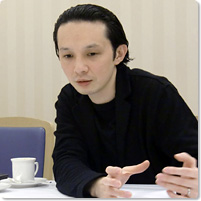
Kaku Nagashima
Born in 1969. Nagashima is one of the pioneers of the dramaturge profession in Japan, performing a wide range of roles from concept proposal to editing and composing stage scripts. He has translated the works of Samuel Beckett, Jon Fosse, Sarah Kane and other foreign playwrights and has worked on the productions of directors including Hatsumi Abe, Shigeki Nakano and others.
(Interview: Akihiko Senda, theatre critic)
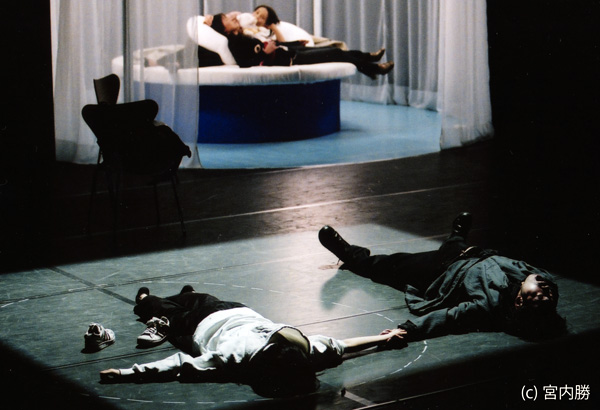
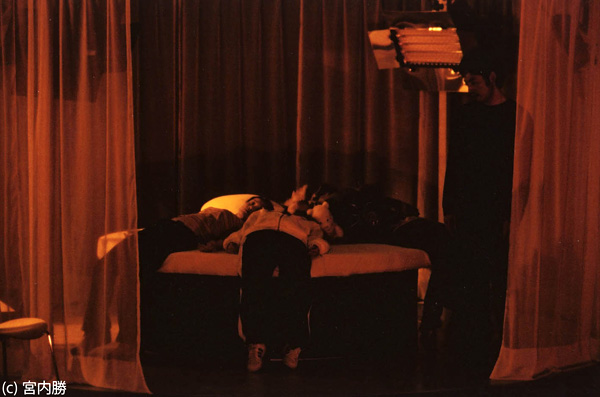
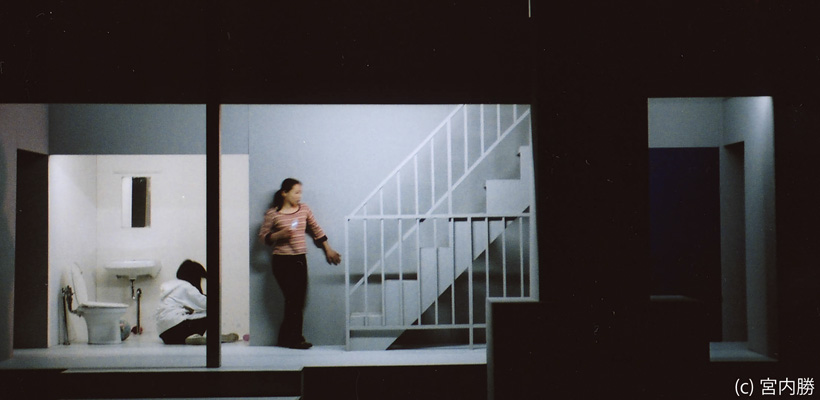
4.48 Psychosis
(Mar. 2006 at Nishi-sugamo Arts Factory, TIF2006)
Directed by Hatsumi Abe
Photo: Katsu Miyauchi
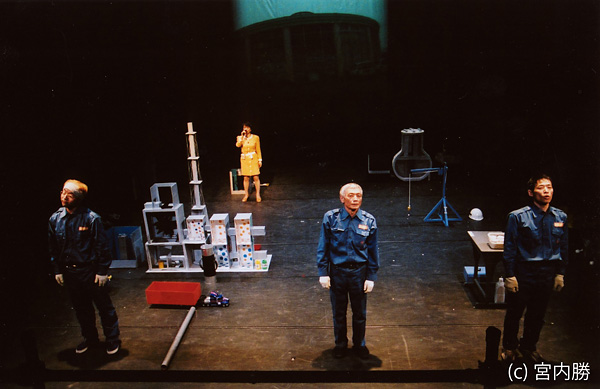
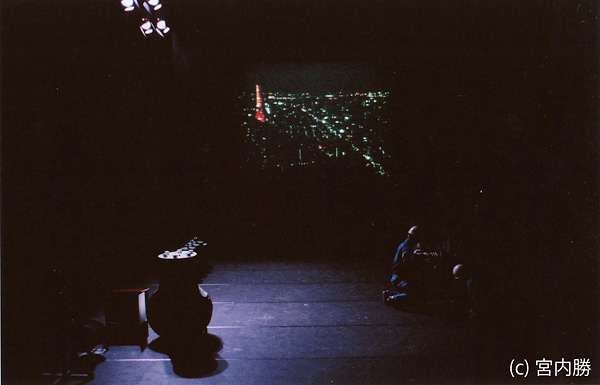
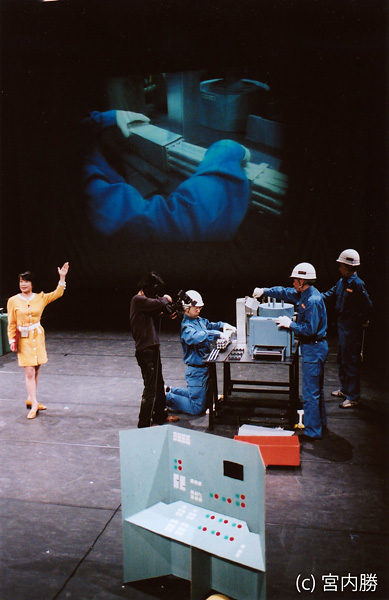
Atomic Survivor – Vanya’s Children
(Feb. 2007 at Nishi-sugamo Arts Factory, TIF2007)
Directed by Hatsumi Abe
Photo: Katsu Miyauchi
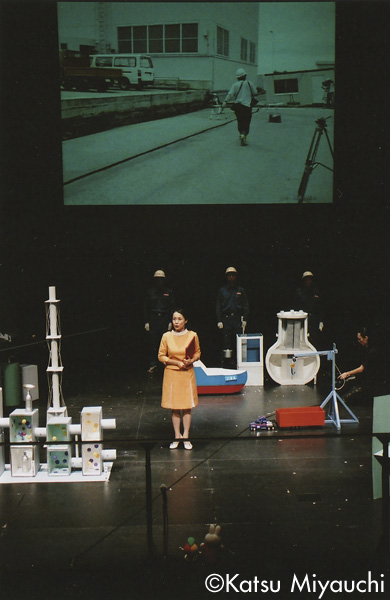
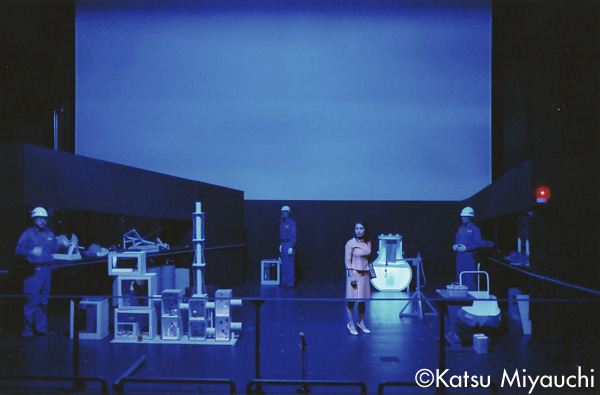
Atomic Survivor – Vanya’s Children (Re-stage)
(Sep. 2008 at Kawasaki Art Center)
Directed by Hatsumi Abe
Photo: Katsu Miyauchi
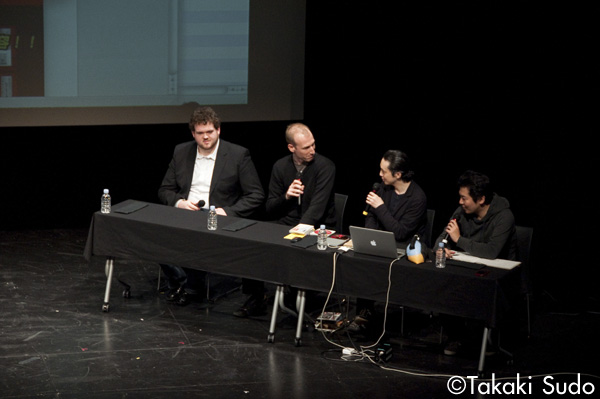
Chushingura (to) no koto Part2
(from Chushingura Fair )
(Dec. 2010 at Kawasaki Art Center)
Photo: Takaki Sudo
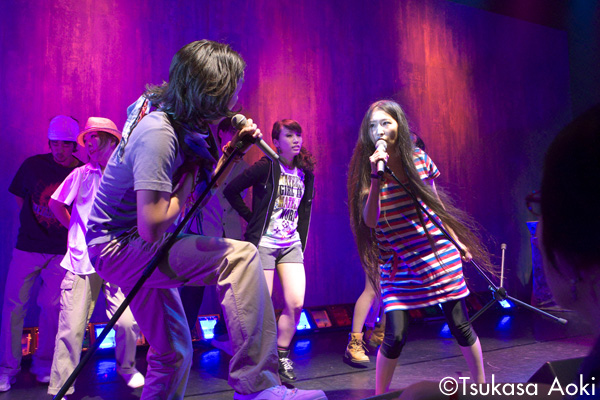
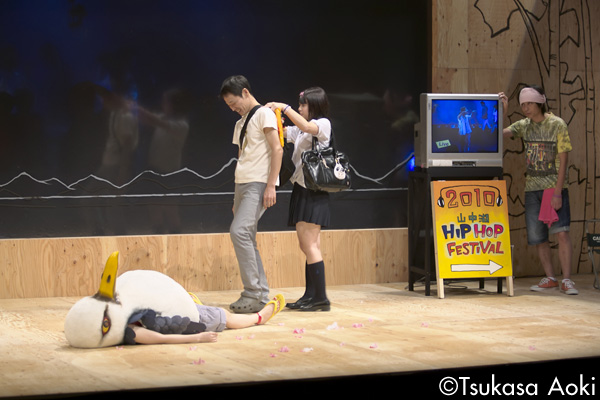
Chotancho (mata ha nagamemijikame)
(Sep. 30 – Oct. 3 2010 at Owlspot Theater)
“Goiyaku” and directed by Shigeki Nakano
Photo: Tsukasa Aoki
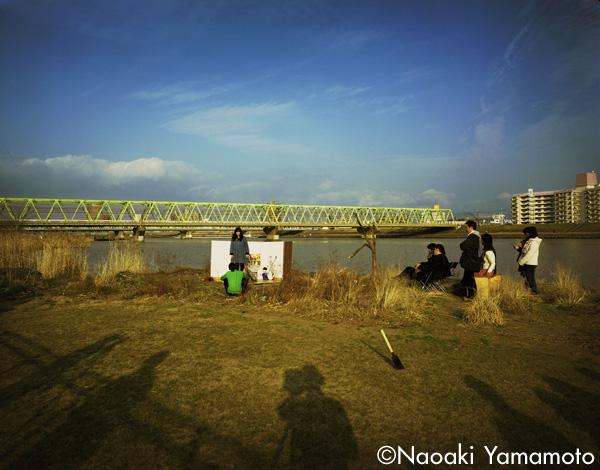
Happy Days
(Jan. 2010 at riverside park on the Edogawa river in Tokyo) Directed by Shigeki Nakano
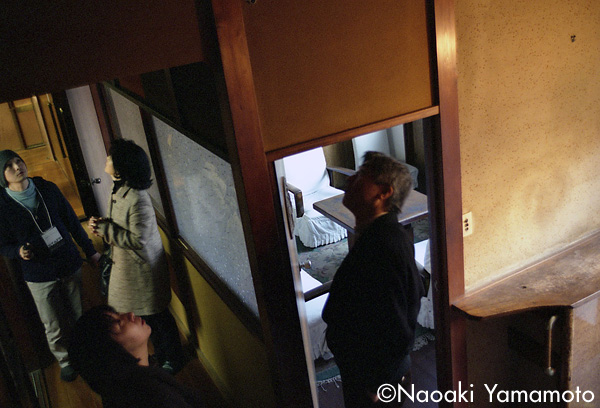
Electra
(Feb. 2010 at Yanaka district of Tokyo’s Taito Ward)
Directed by Kaku Nagashima
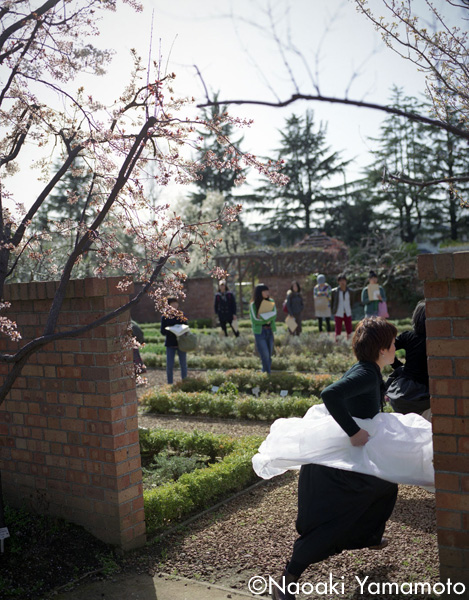
Sakura no En (The Cherry Orchard) – The last experiment
(Mar. 2010 at Keio Botanical Garden “ANGE”)
Directed by Mikuni Yanaihara
From Nichidai×Geidai+mmp’s “Gikyoku wo Motte Machi e Deyo”
Three photos: Naoaki Yamamoto
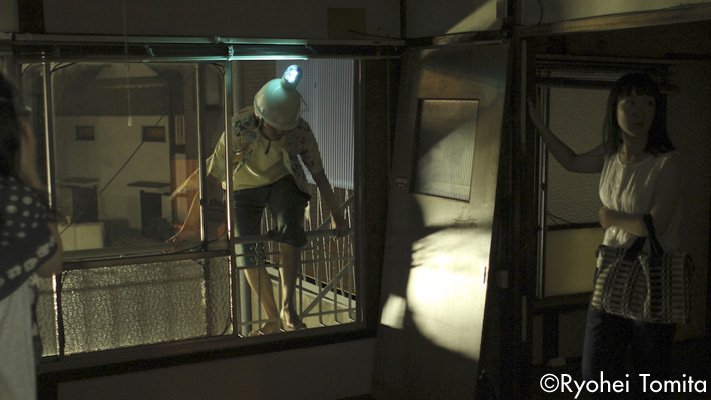
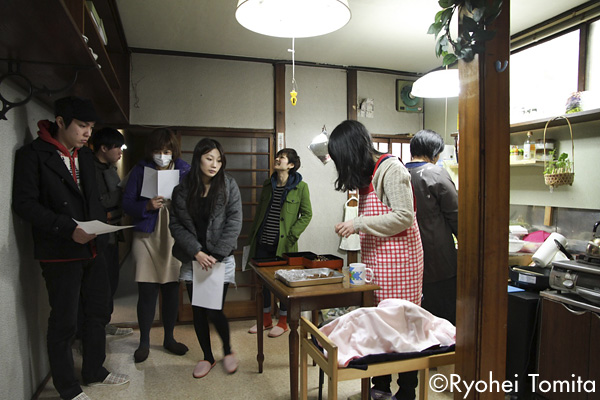
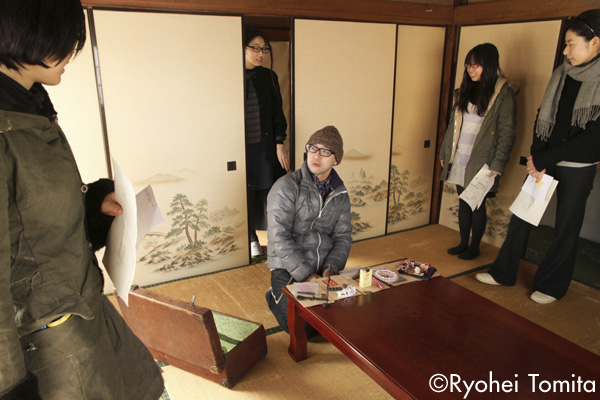
Sumida Ward Atreuske
(Atreus Residence)
(Part1 in Jul. 2010, Part2 in Jan 2011)
Consepted, composed and directed by Kaku Nagashima
Photo: Ryohei Tomita
Related Tags

